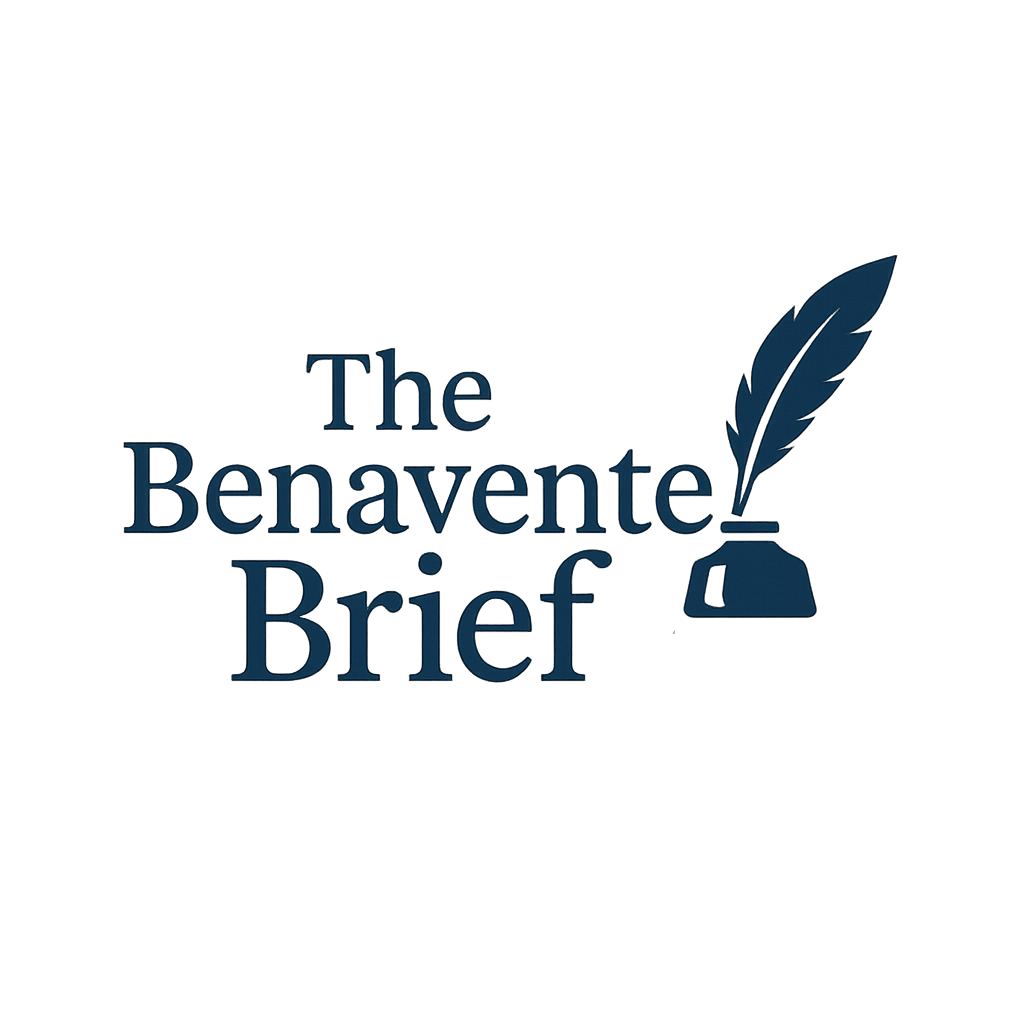Trump, Putin, and the New World Order Emerging from Alaska
By meeting in Alaska, Trump and Putin were not replaying Cold War theater. They were signaling that the next frontier of geopolitics is the Arctic.-Rafael Benavente
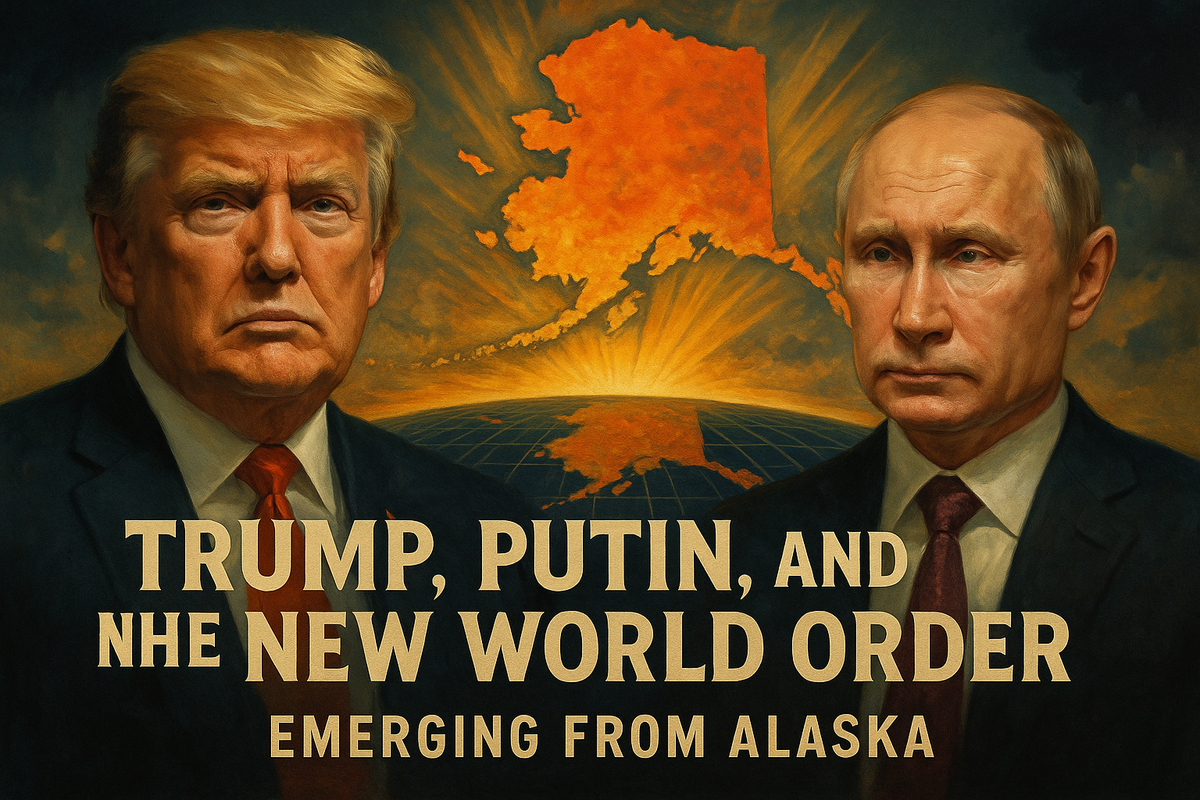
By Rafael Benavente
Trump and Putin in Alaska: Beyond Handshakes and Headlines
The world’s media spent hours obsessing over the handshake, the tie colors, the number of seconds in an embrace when Donald Trump and Vladimir Putin met in Alaska. Commentators on CNN and the BBC analyzed posture, smiles, and body language as if geopolitics could be reduced to cheap semiotics.
But the truth lies elsewhere. This meeting was not about how long Trump paused or whether Putin smiled. It was about conceptual politics, projects of global power that escape the narrow thinking of mainstream politology.
To understand Alaska, one must look far beyond the surface.
Alaska as a Symbol
Alaska is not a random stage. It was Russian territory until 1867, sold to the United States for $7.2 million. Its proximity — just 4 kilometers from Russian soil — makes it a natural meeting point between empires.
Putin reminded the world: “We are not far. We are neighbors.”
Alaska also represents the Arctic frontier, a zone of immense strategic interest:
- Energy resources under the ice.
- Maritime routes of the Northern Sea.
- Military positioning in the global chessboard.
By meeting in Alaska, Trump and Putin were not replaying Cold War theater. They were signaling that the next frontier of geopolitics is the Arctic.
Media Noise vs. Conceptual Vision
While the mainstream focused on superficial images, real issues dominated behind closed doors:
- Strategic nuclear stability and arms control.
- Cybersecurity and hybrid threats.
- Regional conflicts from Ukraine to Syria to Armenia.
- Economic sanctions and energy supplies.
- Extraction of Arctic resources and international law.
The Ukraine war, despite being the media obsession, represented perhaps 5% of the agenda. The rest was far broader — a negotiation over the architecture of the 21st century order.
Projects Globales: The War of Colors
To grasp the meaning of Alaska, one must understand the struggle of the projects globales — the great civilizational forces that shape the world.
- Blue Project – Liberal financial capitalism, globalist, centered in New York and London. Its flags are the tricolors of revolution: liberty, equality, fraternity.
- Red Project – The international communist heritage, now embodied in China. It speaks of community of shared destiny and a collective future.
- Black Project – Nationalist, traditionalist, often rooted in religion. Today its center is the Vatican, the Sol Negro of the Jesuits.
Every major conflict is a clash of these forces. Geopolitics is not two-dimensional — land vs. sea, East vs. West — but triangular, three projects fighting for dominance.
Trump and Putin, in this framework, are agents of the Black Project: national sovereignty, religion, tradition, resistance to globalist control.
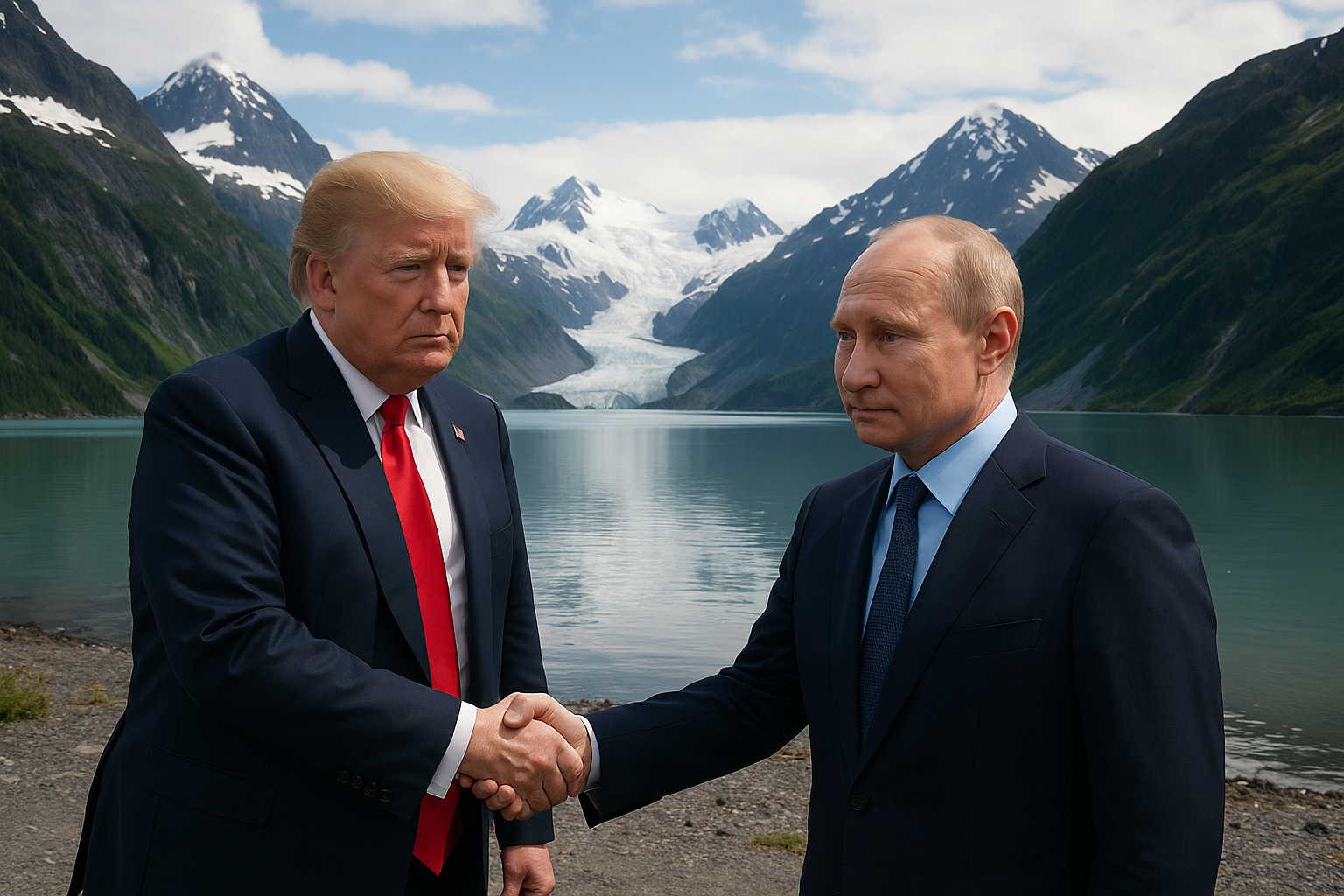
Why Alaska Matters for Trump and Putin
For Trump, the Alaska meeting was a domestic triumph. He could show Americans he commands respect abroad, negotiating directly with Moscow. In his eternal battle against the “deep state,” the encounter demonstrated that he could bypass Washington bureaucracies.
For Putin, it was proof that Russia cannot be isolated. Despite sanctions, despite Western narratives, Russia is too large, too essential to be ignored.
Together, Trump and Putin were telling the world: “You cannot build a global order without us.”
The Return of Crimea and the Shadow of Obligations
Here lies a deeper layer rarely mentioned in public. Crimea is not only a military or symbolic prize — it is tied to historic financial obligations.
- In 1919–1920, agreements linked Crimea to American and Jewish financiers under the California Crimea Project, envisioning Jewish settlement in the peninsula.
- Stalin resisted, offering instead the far-away Jewish Autonomous Region in Siberia.
- In 1954, Khrushchev transferred Crimea to Ukraine — in part, to shift these obligations away from Moscow.
By 2014, when Russia reincorporated Crimea, these debts and commitments resurfaced. Today, recognizing Crimea as Russian could theoretically transfer Ukraine’s debts to Moscow.
When Foreign Minister Lavrov arrived in Alaska wearing a USSR sweater, it was not a joke. It was a semiotic bomb. It reminded the world that Russia inherits both the legacy and the debts of the Soviet Union. The message: “We are the empire, we are back, and we carry the past into the future.”
Israel, Crimea, and the New Khazaria
Another dimension emerges when Israel is placed in the equation. Analysts from Kissinger to Rothschild have long speculated about Israel’s uncertain future in a hostile Middle East. One proposed alternative was the idea of a New Khazaria — in Crimea.
Thus Crimea becomes a triple symbol:
- For Russia, sacred ground of Orthodoxy (the baptism of Prince Vladimir).
- For Jews, a historical candidate for refuge.
- For Turkey, a link to the Tatar khanates and the dream of a new Caliphate.
Every empire sees itself in Crimea. This is why its status shakes the world.
Trump, Putin, and the Deep State
Trump’s challenge has always been the deep state — the entrenched establishment of Washington, NATO, and globalist finance.
In Alaska, for the first time, Trump heard Putin directly in English, without intermediaries. By his own admission, he understood Putin’s perspective clearly for the first time.
This bypassing of filters terrified figures like John Bolton. He warned before the meeting: “They must not be alone. It must be three versus three.”
Why? Because if Trump and Putin speak directly, they can short-circuit the narratives imposed by bureaucracies. They can discover common ground that elites on both sides desperately want to prevent.
The Ideological Void of Russia
Estulin stresses a critical point: Russia lost the Cold War not for lack of missiles or tanks, but for lack of ideology.
The USSR had more weapons, more territory, more population — yet it collapsed without firing a shot. Why? Because Marxism was not enough. It lacked spiritual depth, failed to inspire the “new man,” and was defeated by consumerist capitalism.
Today, Russia risks repeating the error. Military strength cannot substitute for meaning. Without a renewed ideology — Orthodox, nationalist, spiritual — Russia could once again be undermined from within.
United States: The Chosen People Complex
To understand America, one must read the Bible. From its founding, the Puritans saw themselves as a “city upon a hill,” the new Israel chosen by God. Success in wealth and health was interpreted as divine blessing.
This theology of election mutated into American exceptionalism, expansionism, and eventually imperialism. But it also carries seeds of self-destruction. When material success becomes the only proof of grace, spiritual emptiness follows.
Thus, the U.S. swings between messianic mission and internal fascism — slavery, segregation, Ku Klux Klan — all born of the same contradiction.
For Estulin, America’s Achilles heel is its tendency to devour itself. The real threat is not external invasion but civil war, a United States 2.0 consuming itself from within.

Toward a Soviet Union 2.0?
Could Russia rebuild the USSR in a new form? Not exactly. The Soviet empire collapsed due to its ideological weakness. A “USSR 2.0” cannot be simply territorial; it must be spiritual.
What Russia seeks today is something larger: a Eurasian Confederation, a civilization spanning from Lisbon to Vladivostok, anchored in Orthodoxy, tradition, and sovereignty.
This is why Putin resists being absorbed into China’s “yellow dragon” project. Russia does not want to be just another province of a Chinese-led world. It wants to be the Black Project’s pole — Moscow as the Third Rome.
The Drugs, the Money, and the Hidden Economy
Beyond ideologies, one must remember the crude truth: drugs are the lubricant of the global economy. Nearly a trillion dollars in narco-money circulates annually. Without it, the financial system would collapse.
- Major Western banks have been caught laundering billions.
- Narco-dollars flow through offshore havens, London banks, and Wall Street.
- Wars in Afghanistan, Mexico, and Colombia are inseparable from drug finance.
This hidden economy explains why wars persist. They are not only about politics but also about sustaining financial liquidity.
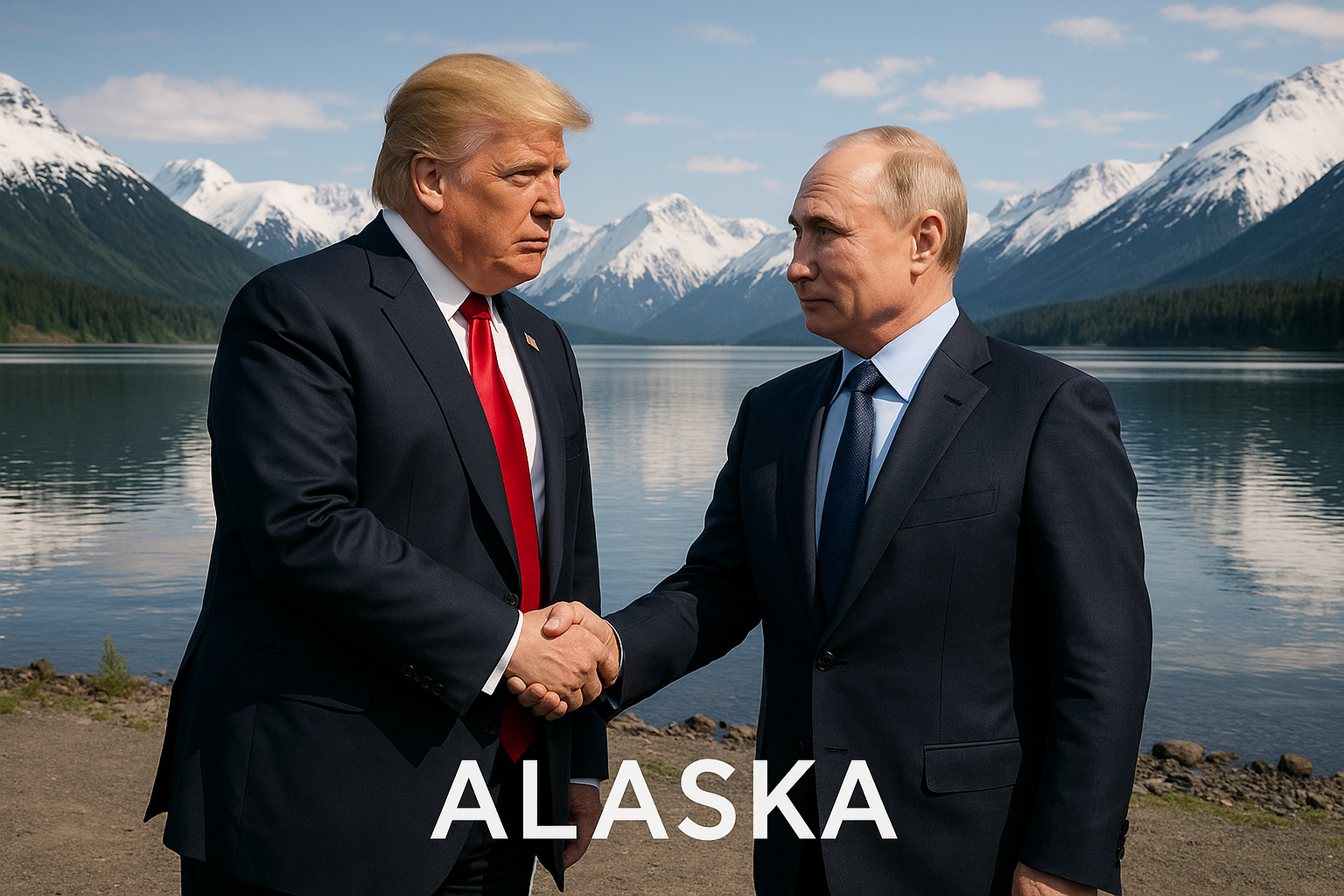
What Alaska Really Means
The Alaska meeting was not about smiles or scowls. It was about projects globales colliding:
- The Blue Project (globalist finance) seeks to prolong its dominance through NATO and the EU.
- The Red Project (China) pushes for a community of shared destiny, controlling technology and supply chains.
- The Black Project (sovereignty, tradition, Vatican roots) rises through Trump, Putin, and forces rejecting globalism.
Alaska symbolized the opening move in a new great game. The world is shifting toward the sixth techno-paradigm: artificial intelligence, biotech, digital surveillance. Whoever dominates this field controls the future.
Trump and Putin both know this. That is why their conversation was sealed in silence, with no joint press conference, no Q&A. Some truths are too explosive for microphones.
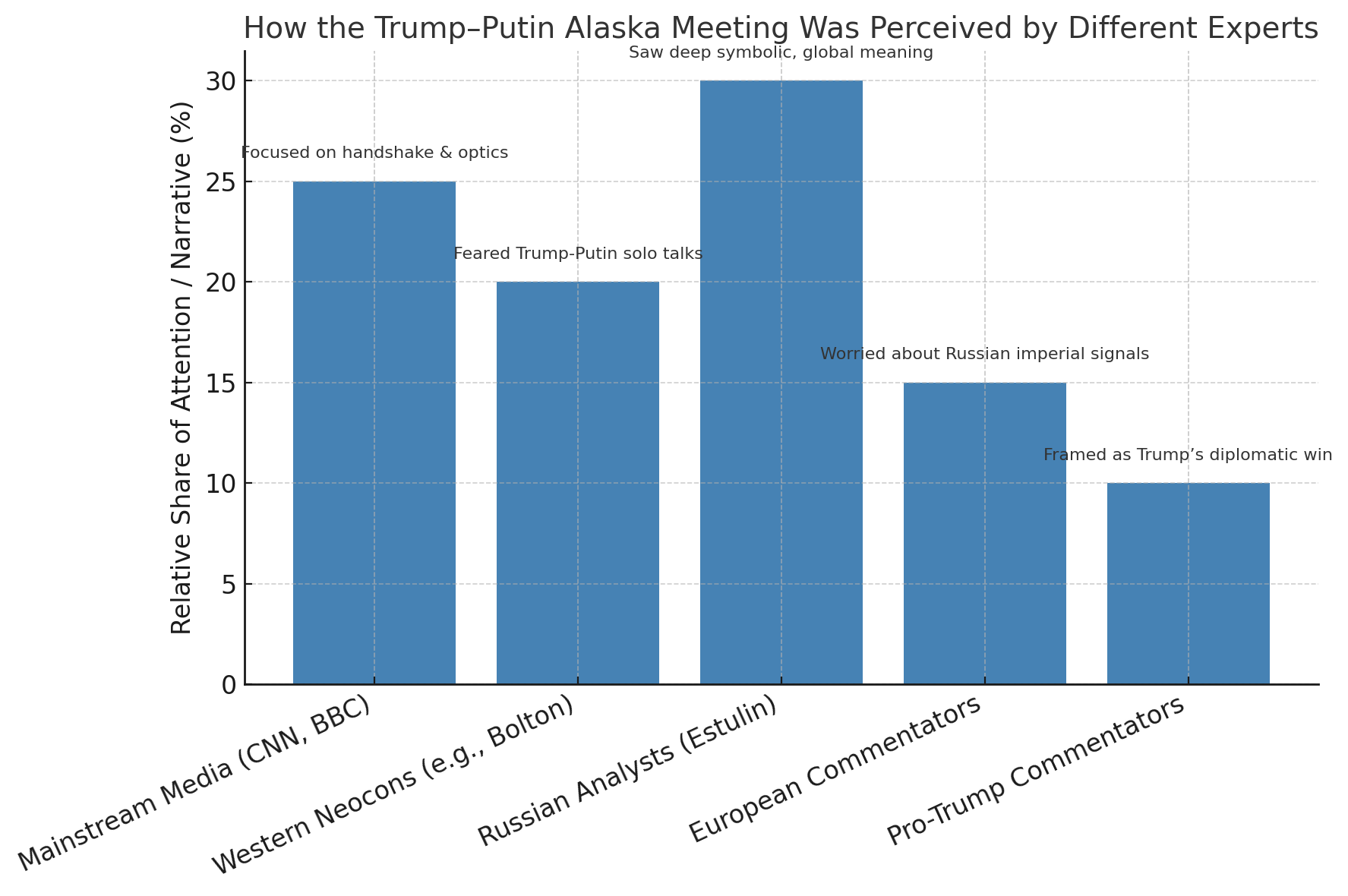
Conclusion: Beyond the Handshake
The mainstream asked whether Trump looked submissive, whether Putin dominated, whether Lavrov’s sweater was trolling.
But the deeper truth is this: the Alaska meeting was a rehearsal for the next world order.
It was not about Ukraine alone. It was about:
- The fate of Crimea as sacred, financial, and geopolitical pivot.
- The struggle between Blue, Red, and Black projects.
- The survival of Russia’s ideology and America’s identity.
- The Arctic as the new frontier of power.
The superficial analysis will fade. What remains is that Trump and Putin briefly aligned against the globalist system, showing that even supposed enemies can share a vision when viewed from the highest conceptual plane.
Whether this alliance holds, or whether it collapses under the weight of history, will determine if the world faces cooperation — or another great war.
By Rafael Benavente
This analysis is based on the commentary and interpretations of Daniel Estulin, shared on his YouTube channel.
